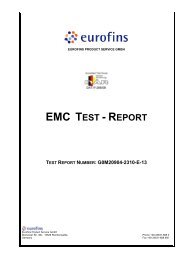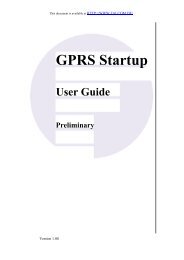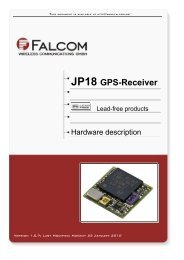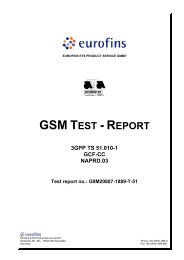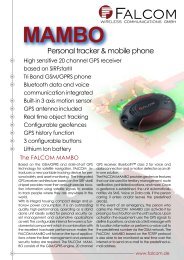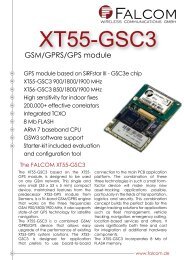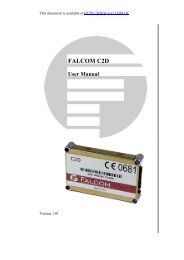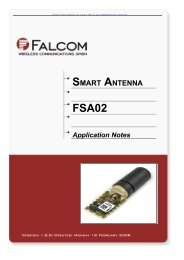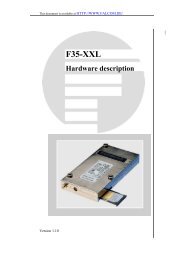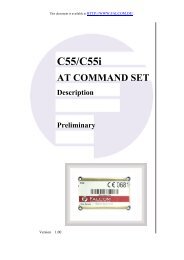FALCOM NAVI-1/XT (Bluetooth ⢠GPS Receivers) User's guide
FALCOM NAVI-1/XT (Bluetooth ⢠GPS Receivers) User's guide
FALCOM NAVI-1/XT (Bluetooth ⢠GPS Receivers) User's guide
Create successful ePaper yourself
Turn your PDF publications into a flip-book with our unique Google optimized e-Paper software.
<strong>NAVI</strong>-1/<strong>NAVI</strong>-<strong>XT</strong> VERSION 1.06<br />
2 Preparing to use your <strong>FALCOM</strong> <strong>NAVI</strong>-1<br />
Read this manual in order to begin using your <strong>FALCOM</strong> <strong>NAVI</strong>-1 and to<br />
understand its operations, functions, and common features.<br />
You must first install a <strong>GPS</strong> Mapping software (if none is installed) on your<br />
PC, laptop, PDA, or other handheld devices.<br />
In order to have a <strong>Bluetooth</strong> connection with your Falcom <strong>NAVI</strong>-1,<br />
secure that the control device is a <strong>Bluetooth</strong>-enabled one.<br />
For more information about software installation, please refer to chapters<br />
described below.<br />
2.1 How does the <strong>FALCOM</strong> <strong>NAVI</strong>-1 work?<br />
The <strong>FALCOM</strong> <strong>NAVI</strong>-1 using SiRF<strong>XT</strong>rac software offers high position<br />
accuracy and fast Time-To-First-Fix (TTFF) than is currently possible with<br />
other autonomous <strong>GPS</strong> solution. This means that the <strong>NAVI</strong>-1 will continue<br />
to determinate its positions or obtain an initial fix in places previously not<br />
possible. In other word the <strong>NAVI</strong>-1 can be used in environments previously<br />
deemed inaccessible environments such as:<br />
� severe urban canyons,<br />
� parking garages,<br />
� dense foliage,<br />
� multi-level freeways,<br />
� under bridges and overpasses, and, in many cases, indoors.<br />
� Coverage - Single Story Office Block<br />
When the <strong>GPS</strong> receiver is initially turned on, it begins to determinate its<br />
current positions, velocity and time which will be calculated from tracking<br />
the <strong>GPS</strong> signals an extremely small level by 16 dBHz. While trying to<br />
calculate a position fix, the receiver needs to be locked-on to at least four<br />
satellites. In order to calculate quickly its current location, the receiver uses<br />
the current received signals from in view satellites, simultaneously holds the<br />
stored data from its memory (SRAM).<br />
Figure 1: Signal processing of <strong>NAVI</strong>-1<br />
This confidential document is the property of <strong>FALCOM</strong> GmbH and may not be copied or circulated without permission.<br />
Page 10




